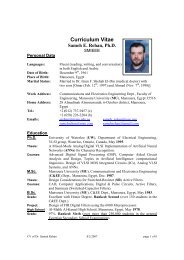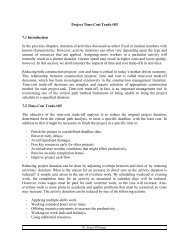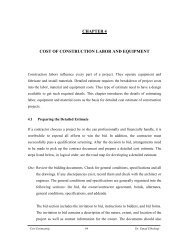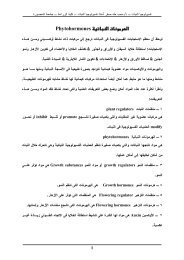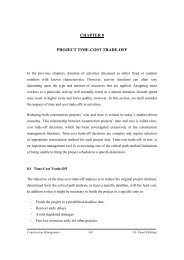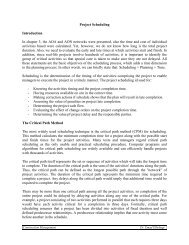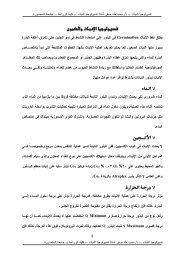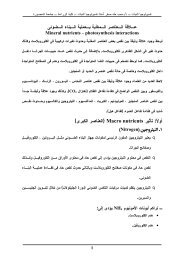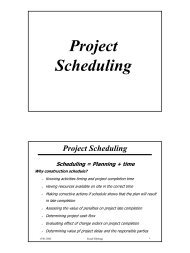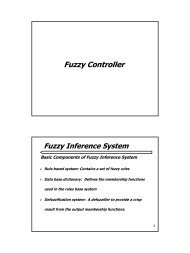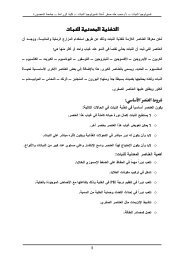Mathematical modeling
Mathematical modeling
Mathematical modeling
Create successful ePaper yourself
Turn your PDF publications into a flip-book with our unique Google optimized e-Paper software.
Now, let's look at the average risk. Since we want to take the average over only theinvested amount, a direct translation of this constraint is:3x 1 + 6x 2 + 8x 3 + 2x 4 + x 5 / (x 1 + x 2 + x 3 + x 4 + x 5 ) ≤ 5This constraint is simplified to get the equivalent linear constraint:-2x 1 + x 2 + 3x 3 – 3x 4 – 4x 5 ≤ 0Similarly we need x 4 ≥ 0.2 (x 1 + x 2 + x 3 + x 4 + x 5 )Or -0.2x 1 – 0.2x 2 – 0.2x 3 + 0.8x 4 – 0.2x 5 ≥ 0The final constraint is x 2 + x 3 - x 1 ≤ 0Together with non-negativity, this gives the entire formulation.2.8 Solved Examples2.8.1 Example 1A city public works department is planning for a new water supply project. Waterfrom a nearby aquifer is available in adequate supply, but its hardness level is toohigh unless it is blended with a lower hardness source. The total-kilograms ofhardness per million cubic meters are limited to 1200 in the final blended supply.Water from a distant stream is of sufficient quality, but the cost to pump it is quitehigh. The city is planning to get the water from three sources: the current supply;the aquifer; and the distant stream. The costs to get water (LE) per million cubic (mm 3 ) meters and the hardness in kilogram per m m 3 are given below.Source 1 Source 2 Source 3Cost (LE/m m 3 ) 500 1000 2000Supply limit (m m 3 ) 25 120 100Hardness (Kg/ m m 3 ) 200 2300 700A total of 150 million cubic meter of water is needed per day by the end of tenyears. Formulate a mathematical model to determine the least-cost strategy forsupplying water while ensuring that the water supply remains of acceptable quality.SolutionSystems Analysis 37 Dr. Emad Elbeltagi




